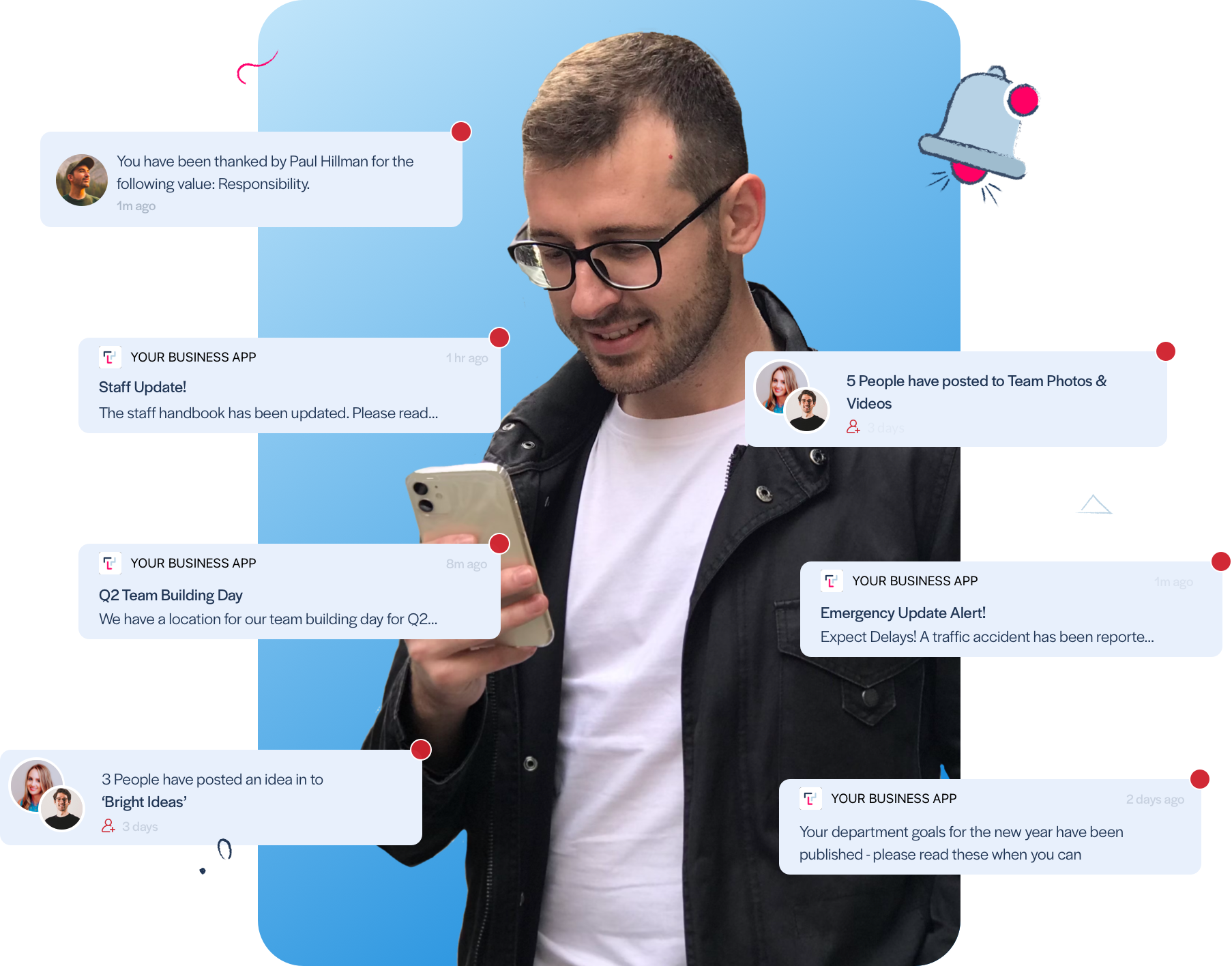Push Notifications
Sending & Scheduling Push Notifications
Push Notifications are an extremely powerful tool in your internal comms arsenal. When you're adding 'need to know' content to your app, a push notification will increase your read rates significantly.
Push Notifications also work with our Content Segmentation feature, in that if you set an Audience for your content, the notification will be sent only to those in the Audience user groups - allowing you target specific sets of employees with your notifications.

How to Send a Push Or In-App Notification
From a Content Item (such as a Page or Web Page) in the CMS, press the Create Notification button to launch a window where you can select various options for your notification, and enter the text that you wish to send.
You'll first be asked whether you want to just send an in-app notification (the bell icon in your app) or both an in-app and push notification. You might decide to select an in-app notification only if the content is not terribly important, or perhaps if you have already sent quite a few push notifications recently and don't want to spam your users with notifications. For important and need-to-know information however, you will usually want to choose to send both an in-app and push notification together:

Now press the Next Step button and you'll be able to choose when you want to send your notification. You can choose to send it immediately, to schedule it for a specific date and time, or to synchronise it with the scheduled publication date and time of your content item:

Next, simply type the text that you want your notification to say. It's a good idea to make this a 'call to action' such as 'Tap here to find out about...' to make it clear to the user that they can tap on the notification to read the full story. Also remember that depending on the device, your text might get cut-off, so it's a good idea not to make your notification text too long:

Finally, you'll be presented with a review screen to confirm all of the options you've chosen before sending your notification. If you want to change anything, simply go back to the appropriate screen and select a different option.
Before moving on, check the Reach figure - this tells you how many users are expected to receive your notification. If it looks too high, you may have forgotten to segment the content to its specific audience for example.

After pressing Create Notification, the window will close and the notification will either be sent immediately, or at the scheduled time. If you've scheduled the notification for later, you can either unschedule it, or edit your notification settings using the Notifications panel on the right hand side of your content:

You can also use this panel to show a detailed notification history for this specific content item or list:

Segmenting Push Notifications to User Groups
When sending a push notification, it will automatically be sent to everyone that the content is available to. By default, the Audience is set to Everyone. But if you segment your content to make it visible only to those in specific user groups, the push notification will also only be sent to the users in those groups.
So if the audience tab looks like this (after Saving and Publishing) and you send a push notification:

Then the push notification will only be sent to those who can see the content - in this case, those in the Area Managers user group.
A Handy Tip
While Push Notifications are a powerful tool and we absolutely encourage you to use them, try to avoid spamming your employees with too many Push Notifications. And especially avoid sending them during non-working hours. If employees feel like they're receiving too many notifications from your app they may make the decision to disable Push for your app in their device settings, or some might simply uninstall the app altogether.
Try to use Push Notifications for content that you really want eyes on, for important information. Three to four Push Notifications per week is usually what we advise to aim for. Check out some more detailed guidance by clicking here, including some DOs and DONTs when it comes to using Push Notifications.
